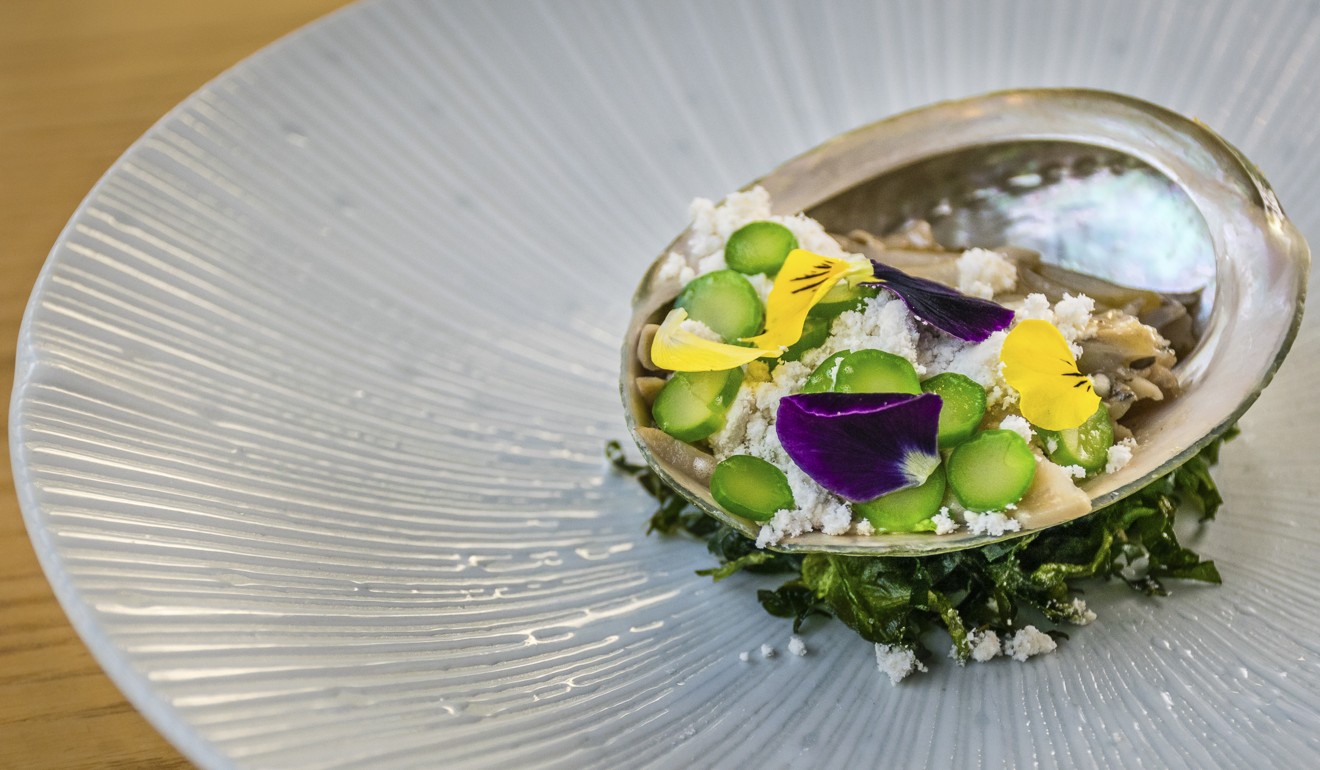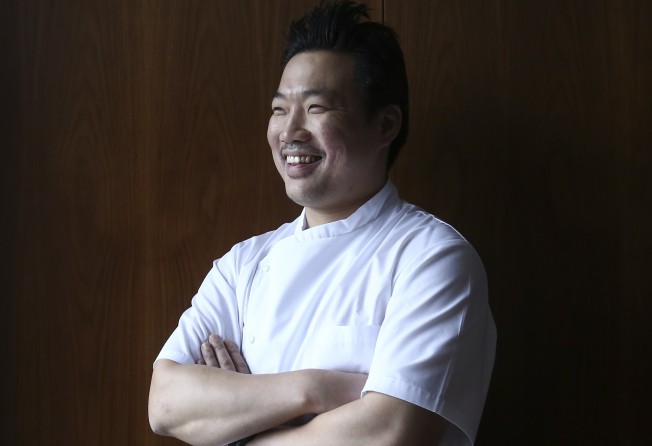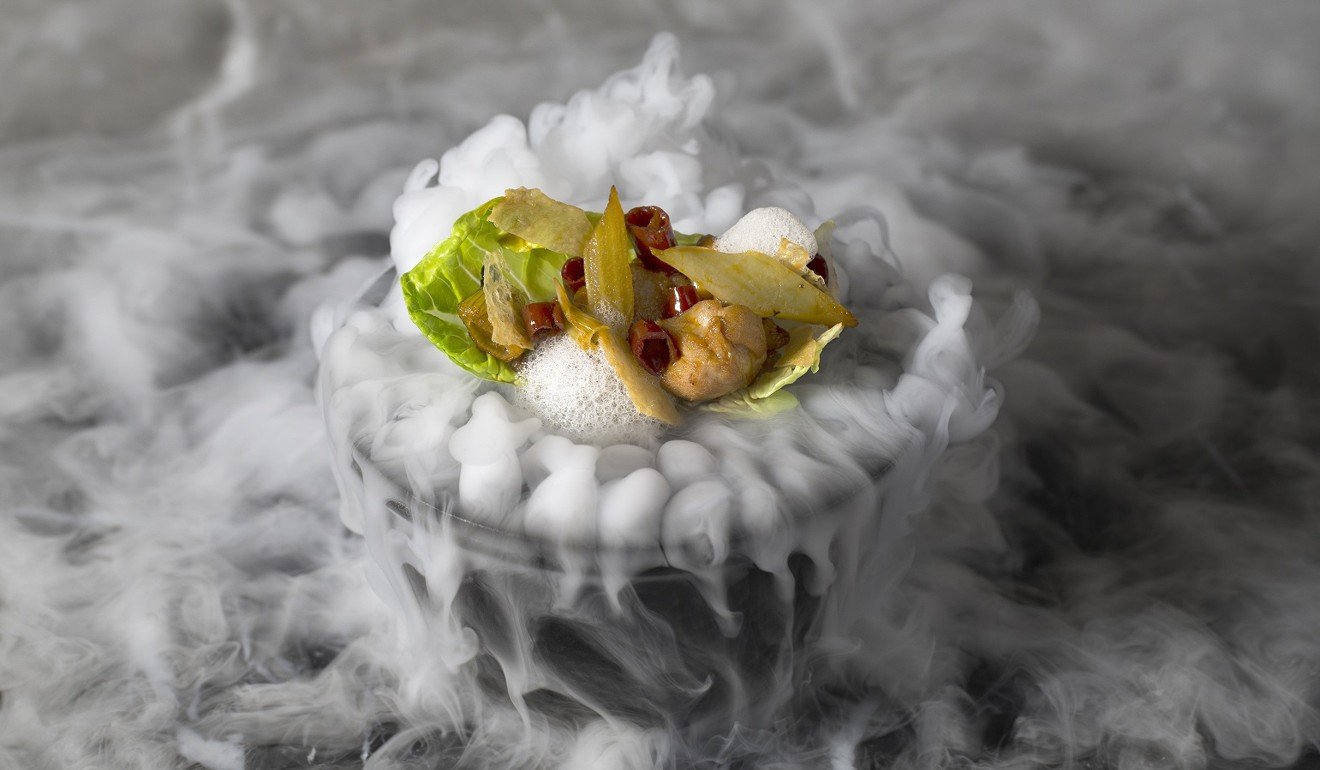
London chef Andrew Wong on how he made chicken feet more palatable to Western diners
The son of immigrants from Hong Kong, Andrew Wong didn’t want to work in the restaurant business. But fate had other plans and today he runs the upmarket restaurant A Wong, in London, where he serves modern Chinese cuisine

How did A Wong come about? “My wife and I opened it 4½ years ago in a part of town where gastronomy isn’t the focus. We sit on the site where my parents had a restaurant since 1985. It served traditional Cantonese food, indicative of Chinese immigrants – my mum is from Hong Kong, my father was a refugee from China who went to Hong Kong. We wanted to do a modern Chinese restaurant, representative of modern China, one where the sharing of dishes is not frowned upon, which is frankly a lot more fun. In Hong Kong I see a lot of restaurants that plate their food and that’s the opposite of what Chinese food is about: eating family style.”
What was your childhood like? “I studied extra hard to make sure I didn’t have to work in a restaurant. My sister and I worked at our parents’ restaurant every spare moment. I didn’t see the catering industry as a career – I always thought it was a pastime or a temporary occupation. But when I was 22 years old, at university, my father died of cancer, and I went back to help my mum. Growing up I had spent a lot of time in the kitchen, but didn’t learn how to cook dishes.”

How did you become interested in cooking? “I went to catering school and learned classical French cooking. I met people who aspired to be in the industry. I started thinking about using Chinese cuisine to do something and that’s when the passion started. Chinese cuisine isn’t just about food – it’s an extension of Chinese culture, well being, medicine and social interaction. Once you explore that, it’s a minefield.”
You learnt cooking in China. what was that like? “I have a lot of friends who are influential in big establishments in China. I told them what I wanted to do and learn, and the Sichuan Higher Institute of Cuisine, outside Chengdu, took me in about eight years ago. I didn’t know Mandarin, but cooking is visual. I learned the basics of Sichuanese food and their approach to food. Their style of cooking is incredibly clean for something that’s so oily, and it’s spicy but not spicy. People in the West have preconceptions that Sichuanese food has aggressive chilli, blowing your face off. It wasn’t like that at all.”

Did you have to educate diners at your restaurant on regional Chinese cuisines? “Yes, absolutely. Chinese food in the UK in general is cheap and fast, with suspect quality. You normally have it on a Friday night when you’re semi-sober. We elevate it with a 10-course menu where each one is a homage to a particular place in China. It’s like a journey and you begin to understand the breadth of Chinese cuisine.”
What is your favourite regional cuisine? “It would be hard not to say Cantonese cuisine. I’m obsessive about dim sum, the idea of it, the style of eating. It’s very clever – it’s playful and it shows an immense amount of skill. It’s humorous when they feign things to be other things, with plays on texture and ingredients, using a lot of starches I didn’t even know existed until I started making dim sum.”

Your version of xiaolongbao involves injecting vinegar. Why do you do that? “As a chef, all you want to do is create dishes that solve diners’ problems. My problem with xiaolongbao is that it is always served with a big dish of vinegar and you dump [the dumpling] in and the whole thing tastes of vinegar and it ruins your dumpling. People in London aren’t familiar with the Shanghai soup dumpling; they don’t know how much vinegar to put on it and don’t know how to eat it. So the idea behind injecting the vinegar is to control the amount that goes into the dumpling so it doesn’t ruin the taste.”
What’s your latest innovation? “I have a take on traditional Hong Kong chicken feet. The idea of steamed gelatinous chicken feet that look like chicken feet is a hard concept for Western people to grasp so we reinterpret the dish. We go through about 90 per cent of the cooking process and in the last step, instead of steaming it, we deep-fry it so it has a crispy texture on the outside, but the inside is still gelatinous with cartilage and skin. It gives them a dish that is still familiar and gets them to understand chicken feet is part of Chinese culture and dim sum. When they next go to a Chinese restaurant they may not be so repulsed at eating chicken feet.”

Name some of your favourite restaurants. “In Hong Kong, the food is very good at Above & Beyond. At China Club, I like the idea that you go in there and see a big picture of Winston Churchill yet the food is inherently Cantonese. I love Pierre Gagnaire’s food, Albert Adria’s food [in Spain] and Brett Graham’s food at The Ledbury [in London]. I go to restaurants for specific dishes. I eat a lot. Eating is a very important part of my life.”
Andrew Wong was in Hong Kong as guest chef at Above & Beyond, at the Hotel Icon, in Tsim Sha Tsui.